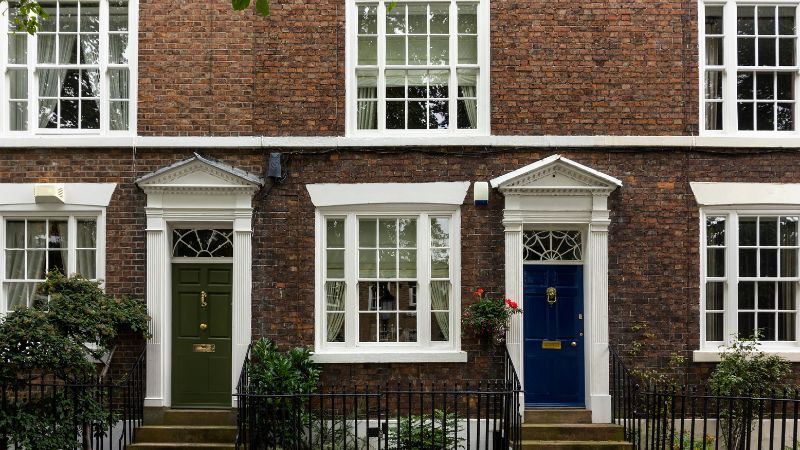Can You Get a Bridging Loan in Spain?
Yes, you can get a bridging loan for a property in Spain. Bridging loans are short-term financing options that help bridge the gap between the purchase of a new property and the sale of an existing one or to finance a property quickly for other reasons.
These loans are available from local Spanish banks, international lenders, and specialised bridging loan providers. They usually require collateral, proof of an exit strategy, and an assessment of creditworthiness.
The application process typically involves a professional valuation of the property, documentation of your repayment plan, and details about your financial situation.
Case study: Read our case study below on how we secured a bridging loan for a Spanish villa in six working days
Why Clifton Private Finance?
We are bridging loan experts, and our advisers know the complex ins and outs of the bridging market.
In fact, in 2022, we won two awards for our bridging service.
And we also won Bridging Broker of the Year 2023.
Call us on +44 203 900 4322 to discuss your requirements.
How Do Bridging Loans Work?
Bridging loans are short-term financing solutions designed to manage cash flow gaps, typically for purchasing a new property before selling an existing asset. These loans, available for durations ranging from a few weeks to up to 12-18 months, come with higher interest rates due to their short-term nature and higher risk.
Once approved, funds are quickly disbursed, and interest can be paid monthly, rolled up to the end, or deducted upfront. Repayment occurs when the borrower secures long-term financing, sells a property, or receives other funds.
While bridging loans offer flexibility and quick access to funds, they come with higher costs and the risk of financial strain if not repaid on time, making a clear exit strategy crucial to securing the loan.
Ways to repay a bridging loan for a property overseas include:
- Selling your primary residence- Planning to sell up and move to sunny Spain but can't secure a mortgage overseas? A bridging loan can allow you the flexibility to get settled into a new home before repaying the loan once you've sold your home in Britain.
- Selling an investment property- Keeping your main residence but have a property portfolio or second home? If you're aiming to sell one of these properties within the next 12-24 months you can use the funds to repay your bridging loan
- Selling a business or asset - Bridging loans are relatively flexible, so if you're awaiting the sale of a business or valuable assets (such as land, stocks, bonds etc.) these may all be used to pay back a bridging loan.
Understanding LTV for International Property Purchases
Often, bridging loans are secured against both the assets being sold and the property being bought, which lowers the LTV significantly and results in a better interest rate. However, this dual security arrangement is not possible with an international property unless you speak to a Spanish lender. Fortunately, because properties in Spain are generally cheaper than those in the UK, this limitation is seldom an issue unless you still have a lot of your mortgage left to repay. We can also make introductions to specialists in Spain if required, and in this case, the bridging loan can be secured against both properties.
Watch our video below - Bridging Loans Explained: Costs, Timescales, Examples, & How To Get One:
What Are the Lending Criteria for a Bridging Loan?
The lending criteria for a bridging loan typically include using a property as collateral, with the property undergoing a professional valuation to determine its market value. Both residential and commercial properties can serve as collateral, with most lenders offering loan-to-value (LTV) ratios ranging from 65% to 80%.
- A Well-Defined Exit Strategy - This is arguably the most important part of a bridging loan application. Bridging loans are offered on the basis that you have a surefire way to repay the lump sum in 12 months, so you'll need to ensure that your repayment method is foolproof. This could be the sale of the property, refinancing into a long-term mortgage, or another source of funds.
- Evidence of Viability - Lenders need proof that the exit strategy is viable and realistic.
- Credit History - While bridging loans are often more lenient than traditional mortgages, a good credit history can improve approval chances and secure better terms.
- Financial Stability - Demonstrating financial stability and the ability to service the loan during its term is important.
- Usage - Lenders need to understand the purpose of the loan, whether it's for purchasing a new property, funding renovations, or managing urgent financial needs.
- You'll need to provide necessary documentation, including proof of identity, property details, and income statements, ensuring compliance with legal regulations. Additionally, borrowers should be prepared to cover associated fees, such as arrangement, valuation, and legal fees.
Case study: Our case study below details how we secured a €1.5M bridging loan to renovate a luxury Spanish villa
What Deposit Will I Need?
Usually, you'll need to provide a bridging loan between 20% and 35%. The exact amount will be influenced by the valuation of the property used as collateral. Securing your bridging loan against a property with a higher value may mean that you can provide a low deposit as long as the LTV is acceptable.
It's also crucial to account for extra costs associated with purchasing property in Spain, such as taxes, legal fees, and administrative charges.
How Much Will a Bridging Loan Cost?
Bridging finance entails various costs, the exact amount of which depends on factors such as the complexity of your case, the loan size, and other considerations.
Here's an overview of typical bridging loan expenses and their workings:
- Interest Rates
- Valuation Fee
- Legal Fees
- Broker Fees
- Arrangement Fees
- Drawdown Fee
- Exit Fees
Several factors influence bridge loan rates, including the loan-to-value ratio (LTV), the loan amount and duration, property condition and purpose, regulation status, property location, and credit history.
While bridging loans may incur higher costs, they often provide value by facilitating property acquisition or business needs. Clients frequently find that the profits from property refurbishment and optimal market positioning cover bridging loan expenses.
To see how much a bridging loan could cost you, use our bridging loan calculator. Affordable bridging loans exist, and a bridging finance broker can get you access to the best deals.
Can I Buy at Auction in Spain?
Yes, you can buy a property at auction in Spain. Property auctions in Spain are a viable option for purchasing property, often presenting opportunities to acquire properties at competitive prices.
These auctions can be held by banks, courts, or public institutions, usually involving properties that have been repossessed or are being sold to recover debts. To participate in an auction, you must register in advance and provide a deposit, typically around 5-10% of the property's starting bid price.
It's crucial to conduct thorough research before bidding, including visiting the property if possible, reviewing any legal issues or debts associated with it, and understanding the auction terms and conditions.
Additionally, having financing in place beforehand is essential, as auction purchases often require quick payment after a successful bid. Buying at auction can be an effective way to secure a property in Spain, provided you are well-prepared and informed about the process.
Case study: Our case study explains how we arranged a bridging loan for a property in Spain
Do You Need to Be a Spanish Citizen to Buy Property in Spain?
No, you don't need to be a Spanish citizen to buy property in Spain. Foreign nationals, including individuals from non-EU countries, can freely purchase property in Spain. Spain has relatively liberal property ownership laws, allowing non-residents to buy property without significant restrictions.
However, foreign buyers must follow certain legal and administrative processes when purchasing property in Spain.
It's essential to work with local legal professionals and property agents who are familiar with the specific regulations and requirements for foreign buyers to ensure a smooth and legally compliant home buying process.
Additionally, while citizenship is not a requirement, non-EU citizens may need to obtain a Spanish residency permit to stay in Spain for an extended period, especially if they plan to spend a significant amount of time in the country or reside there permanently.
How to Get a Bridging Loan for a Property in Spain
Typically, you'll need to speak to a bridging loan broker to get a bridging loan. You can go directly to lenders, but not all lenders accept direct applicants. Also, most people use a bridging loan broker to guide them through the process, compare rates and get the best deal. Unless you've used them before, we generally don't recommend trying to go direct.
We can help with meeting tight deadlines & provide fast and professional bridging loan service.
Call our team on 0117 205 4833 to discuss your requirements or book an appointment below.
You can also use our 24/7 enquiry service through live chat. Contact us any time, and we'll get back to you as soon as possible - we reply to every message.











